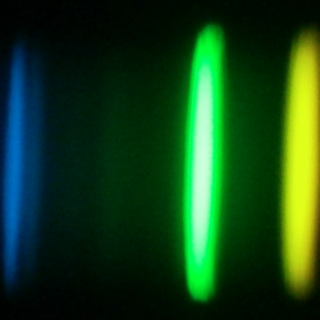Bibcode
Nidever, D. L.; Holtzman, Jon A.; Allende Prieto, C.; Beland, Stephane; Bender, Chad; Bizyaev, Dmitry; Burton, Adam; Desphande, Rohit; Fleming, Scott W.; García Pérez, A. E.; Hearty, Fred R.; Majewski, Steven R.; Mészáros, Sz.; Muna, Demitri; Nguyen, Duy; Schiavon, Ricardo P.; Shetrone, Matthew; Skrutskie, Michael F.; Sobeck, Jennifer S.; Wilson, John C.
Referencia bibliográfica
The Astronomical Journal, Volume 150, Issue 6, article id. 173, 23 pp. (2015).
Fecha de publicación:
12
2015
Número de citas
412
Número de citas referidas
393
Descripción
The Apache Point Observatory Galactic Evolution Experiment (APOGEE),
part of the Sloan Digital Sky Survey III, explores the stellar
populations of the Milky Way using the Sloan 2.5-m telescope linked to a
high resolution (R ∼ 22,500), near-infrared (1.51–1.70 μm)
spectrograph with 300 optical fibers. For over 150,000 predominantly red
giant branch stars that APOGEE targeted across the Galactic bulge, disks
and halo, the collected high signal-to-noise ratio (>100 per
half-resolution element) spectra provide accurate (∼0.1 km
s‑1) RVs, stellar atmospheric parameters, and precise
(≲0.1 dex) chemical abundances for about 15 chemical species. Here
we describe the basic APOGEE data reduction software that reduces
multiple 3D raw data cubes into calibrated, well-sampled, combined 1D
spectra, as implemented for the SDSS-III/APOGEE data releases (DR10,
DR11 and DR12). The processing of the near-IR spectral data of APOGEE
presents some challenges for reduction, including automated sky
subtraction and telluric correction over a 3°-diameter field and the
combination of spectrally dithered spectra. We also discuss areas for
future improvement.
Proyectos relacionados

Abundancias Químicas en Estrellas
La espectroscopía de estrellas nos permite determinar las propiedades y composiciones químicas de las mismas. A partir de esta información para estrellas de diferente edad en la Vía Láctea es posible reconstruir la evolución química de la Galaxia, así como el origen de los elementos más pesados que el boro, forjados principalmente en los interiores
Carlos
Allende Prieto